Anacampseros arachnoides
| Botanical Name | Anacampseros arachnoides |
|||||||||||
| Family | Portulacaceae - The purslane family. |
|||||||||||
| Pronunciation | a-nuh-KAMP-suh-ros a-rak-NOY-deez |
|||||||||||
| Common Name(s) | ||||||||||||
| Plant Group |
|
|||||||||||
| Plant Size |
|
|||||||||||
| Position |
|
|||||||||||
| General Information |
|
|||||||||||
| Specific Information | Anacampseros arachnoides is a small succulent plant with green, reddish or dark brown, broad, thickened leaves ending in a point. The leaves and parts of the plant may be smooth or covered with fuzzy hairs. Groups of leaves are held in rosettes which lengthen with age. The plant spreads outwards to form a mat. Flowers are unexpectedly showy for such a small plant and only open in the sun for a few hours during the afternoon. They seed profusely and the small, papery, white seeds are distributed by wind. |
|||||||||||
| Ad Break | ||||||||||||
| Flowers | ||||||||||||
| Description | flat, wheel-shaped flowers with five elongated, pointed petals about 2.5 cm in diameter |
|||||||||||
| Season |
|
|||||||||||
| Colour |
|
|||||||||||
| Growth Rate |
|
|||||||||||
| Plant Uses |
|
|||||||||||
| Distribution and Habitat | in the Western and Eastern Cape provinces, in the Little and Great Karoo, in rock crevices, stony soil, among grasses and in the protection of scrubby shrubs |
|||||||||||
| Planting Suggestions | Plant in very well drained sandy, gritty, stony or loam soil in a sunny, airy spot or in a container that receives plenty of sunlight. Water during during the warmer months, allowing the soil to dry out between waterings and reduce water during the cooler months. Protect from frost and icy weather. If the plants are too wet they will rot. Remove all rotted pieces so that you have only healthy stems. Allow to dry for a day or two and place the remaining parts on a dry sandy surface. Water only occasionally. The plant should root over time. Propagate from cuttings or seed. Seeds germinate easily just by being left on the ground around the plant or in a pot/tray containing a sandy soil mixture. |
|||||||||||
| Medicinal Uses | No data found. |
|||||||||||
| Ad Break | ||||||||||||


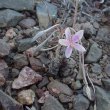
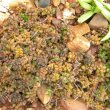
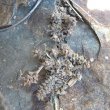
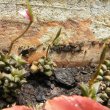
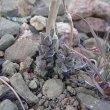


Discuss this plant
Share knowledge, ask a question or give an experience.